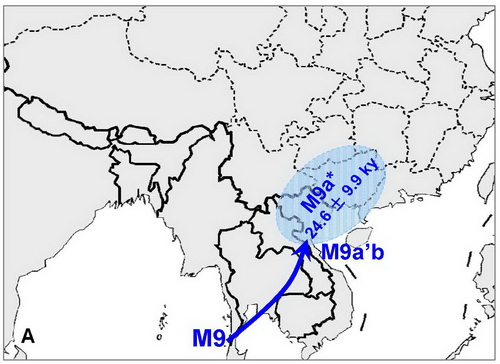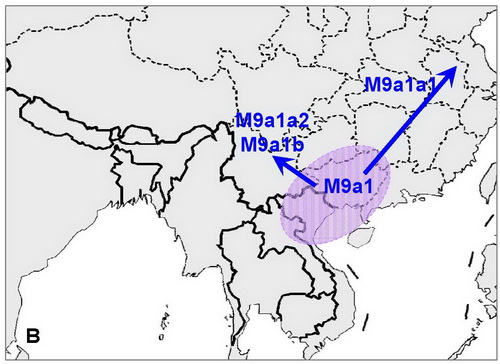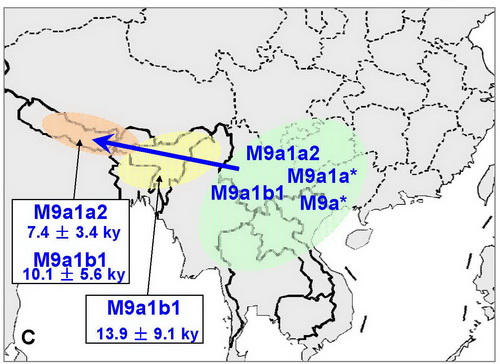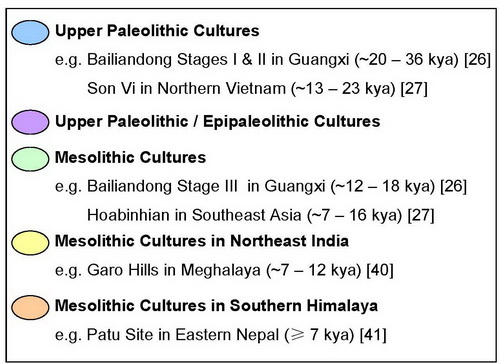The wide influence of the climatic oscillation and the related ecological changes around the Last Glacial Maximum (LGM) on driving prehistoric dispersal and cultural transitions of modern human has been widely acknowledged among archaeologists. Using the phylogeographic analyses of specific molecular markers, the ancient dispersal around the LGM was indicated to leave some geographic signatures in current gene pool of modern human. However, details of the ancient dispersal and its effect still remain poorly characterized in East Asia.
To get deeper insights into this northward migration of modern humans around the LGM in East Asia, Zhang Ya-Ping’s group focused on an East Eurasian specific haplogroup M9a’b, which was suggested to have some potential for tracing the ancient migration around the LGM in East Asia. The extensive phylogeographic analyses of mtDNA haplogroup M9a’b first reveled that southern China and/or Southeast Asia served as a source of the post-LGM dispersal in East Asia. More importantly, the result provided solid evidence in support of the existence of an inland dispersal in mainland East Asia during the post-glacial period, and it was this dispersal that had expanded its effect not only to western China but also far to South Himalaya and Northeast India. Furthermore, this inland post-glacial dispersal seemed to have left a similar geographic signature on mtDNA haplogroup F1c, and was in overall agreement with the spread of the Mesolithic culture originating in South China and northern Vietnam. Finally, this work presented a prime example that the post-glacial dispersal might have played an important role in shaping the genetic landscape of east Eurasian, which has been published in BMC Biology (http://www.biomedcentral.com/1741-7007/9/2/abstract).




